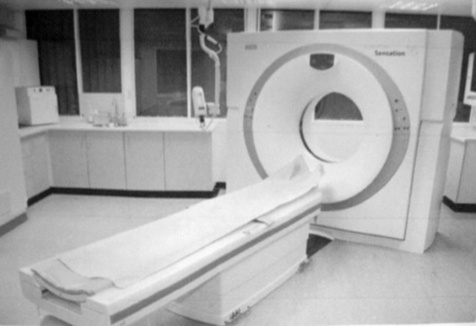Chapter 18 Computed tomography
 System components include the scanner, the computer system, the image display system and remote work stations.
System components include the scanner, the computer system, the image display system and remote work stations.INTRODUCTION
The 1980s saw a significant advancement in technology with the introduction of slip rings, which eliminated the need for a high-tensioncable supply to the X-ray tube and detectors and allowed the X-ray tube to rotate continuously in one direction around the patient. This is known as spiral or helical CT. Slip rings are ‘electromechanical devices consisting of circular electrical conductive rings and brushes that transmit electrical energy across a rotating interface’.1 Slip ring technology was first incorporated into the third generation scanners. The most common type of CT scanner in use today is the fourth generation scanner, incorporating a stationary circular ring of detectors and a large fan beam of X-rays.
SYSTEM COMPONENTS
System components for CT generally fall into four categories:












